Intermediates
Gallantry and accessories
Blog Piekiełka
Topaz - a biblical gemstone
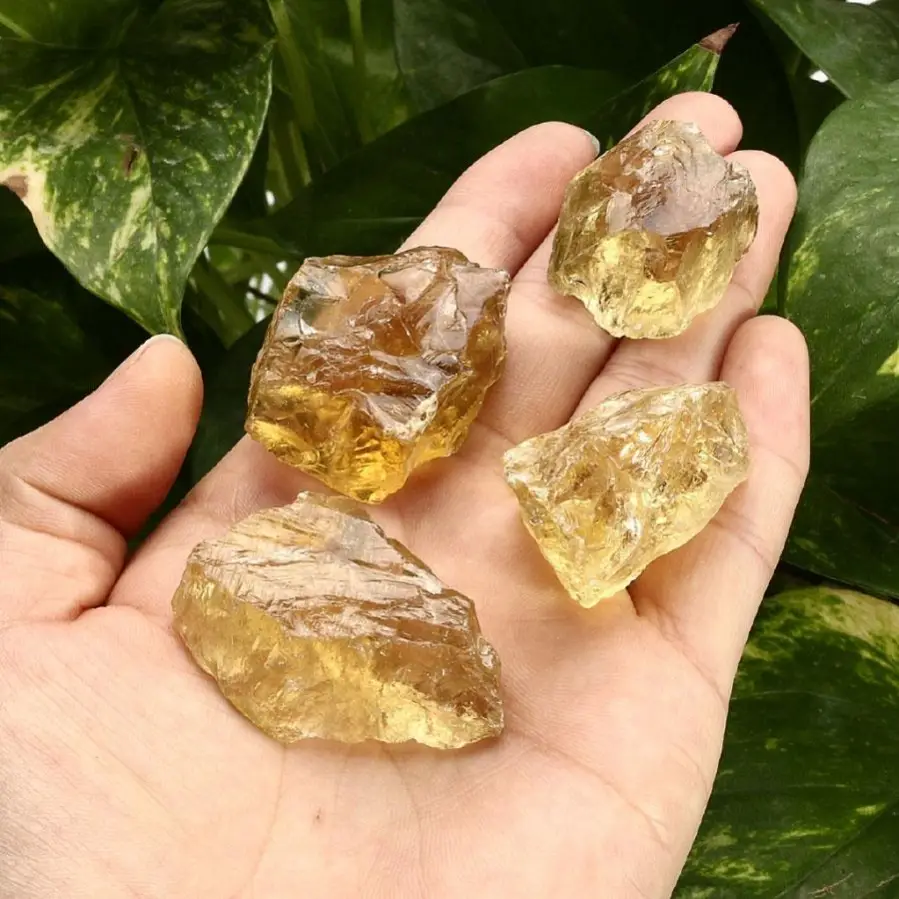
To date, the origin of the stone's name has not been clearly determined. According to Pliny the Elder, "topaz" comes from the name of an island in the Red Sea where the minerals are mined. The island of Topazus (today Dzhazirat Zabarjad or St. John's Island) was known in ancient times, and Egyptian jewelry with stones from the island is dated to the 2nd millennium BC. Only that, as it turned out, the gemstones found there were not green topaz, but green peridot (olivine), which was long confused with topaz.
Another attempt to explain the name goes back to the Sanskrit word tapas, which means "light" or "fire," or the Greek topazios = "to seek" (as the stone was always very popular).Topaz was already mentioned in the Bible and in the Revelation of St. John appears as the ninth of the twelve cornerstones of the city walls of Jerusalem. Moses gave topaz to his brother Aaron, who set it in his pectoral along with eleven other gemstones, signifying the twelve tribes of Israel. In ancient times, topaz was associated with Jupiter and considered a symbol of the power of rulers. It conveyed to them the wisdom needed for their position.
Because of its outward appearance, it is easy to confuse topaz with other gemstones. This happened, for example, in 1740 with a topaz mistakenly taken for a diamond, which was embedded in a Portuguese crown. The most spectacular topaz find took place in Wogtland's Schneckenstein, in the Saxon Ore Mountains. 480 golden topazes were unearthed there and incorporated into the English crown. Topazes for Augustus the Strong were also obtained from this source. So-called golden topazes and Madeira topazes, which are actually citrine, are available commercially.
Properties of topaz
Topaz, as a mineral, is classified in the silicate group due to its chemical composition (Al2(F,OH)2SiO4). It crystallizes in a rhombic arrangement, forming long to short prismatic crystals. Aggregates of the mineral are characterized by great variability of form - they can be thick and massive, columnar and slender. It is not uncommon to find topaz crystals of considerable size. Topaz has a glassy luster and good transparency. Its flakiness is excellent and its break is shell-like. With its hardness of 8 on the Mohs scale, it qualifies as a gemstone. The density of topaz is 3.53 to 3.56 g/cm3.
Topaz color
Topazes are colorful minerals, with yellow and colorless being the most common. In addition, they can be green, brown, red, orange, purple, pink, raspberry and blue. Depending on its color, origin and form, topaz is sometimes given different trade, regional or common names. For example, under the terms imperial or imperial topaz are yellow to yellow-brown topazes, while brown topaz is referred to as sherry.
The color of this mineral can have both idiochromatic and allochromatic origins. These seemingly complicated terms in mineralogy simply mean the dependence of topaz color on either the internal structure of the pure substance (in the first case) or on admixtures of foreign substances (in the second case). Red and pink topaz are defined as allochromatic because of the presence of foreign chromium and iron atoms. Blue, yellow and brown topazes, on the other hand, are categorized as idiochromatic minerals, since the cause of their color is defects in the crystal lattice.
For a long time, colorless topaz was considered unpopular, primarily in comparison with white diamond. The point is that due to its rather low index of refraction (1.619 to 1.627 of topaz versus 2.42 of diamond), topaz could not compare with diamond in terms of brilliance and luster. Nevertheless, the effect of white topaz can be greatly enhanced by using the right cut. It is important to use a facet cut, on the planes of which there is multiple reflection of light. Facet cuts with a small number of planes, or an emerald or baguette cut, are less optimal for topaz.
Topaz color change
Topazes in blue and pink are the most favored on the gemstone market. It's just that the amount of naturally colored blue and pink topazes does not meet the demand in jewelry stores. Changing or correcting the color of topaz can be achieved by either firing or irradiation. During firing, topazes are heated to a temperature of about 500°C. As the heat is applied, the color of the stones is permanently changed or intensified. This method of color change is particularly useful for orange topazes, which turn pink during annealing. Yellow topazes respond to firing by changing their color to pink, purple or golden yellow.
Another procedure for changing the color of a mineral is based on the use of radiation. As a result of controlled irradiation and final annealing, the color of yellow topaz changes and three different variations of blue are produced:
- Sky Blue Topaz - topaz as blue as the sky, light blue pastel color.
- Swiss Blue Topaz - Swiss blue: light blue
- London Blue Topaz - London blue: dark color, greenish blue, almost petrol
Mystic topaz
A striking variety of topaz, increasingly sought after, is mystic or rainbow topaz. The distinctive feature of mystic topazes is an iridescent metallic sheen in yellow, red, pink, purple, blue and green - all at the same time. Such color play does not occur naturally on the stones and is created artificially.
Bright or colorless (white) topaz is coated with a thin layer of titanium, which will evoke shimmering colors. The procedure of physical vapor deposition - PVD for physical vapour deposition - imparts only a surface coating of titanium, so it can only be used after the stone has been ground.
The importance and use of topaz
Topaz is one of the most loved gemstones, which is suitable for making rings as well as bracelets, pendants and earrings. When grinding topaz, the color and purity of the stone come first, which is best exposed with a facet cut. Topaz processing can be troublesome, due to the flakiness and cracking of the mineral.
When buying topaz, you need to pay attention to its originality. It is often the case that other minerals bear misleading trade names associated with topaz in order to raise the price. For example, in the case of topaz from Madeira, it is a fired amethyst, or citrine, which is sometimes called golden topaz because of its color. Smoky topaz, on the other hand, is not any variety of topaz, but smoky quartz - a variety of quartz with a smoky color. In addition, there are sometimes imitations of topaz made of glass (known as stras), polished and coated with a substance that improves brilliance.
Topaz is known as a lucky stone. It boosts courage and self-confidence, protects against anxiety, insomnia and depression. It enhances creativity, inspires and develops artistic potential. It is believed to have a great influence on artists, musicians and writers. It alleviates irritability and nervousness.
Hildegard of Bingen and topaz
The famous 12th century Frankish visionary and healer described the healing stone topaz as follows:
"Topaz is formed in the ninth hour after sunrise from the moisture and heat of the sun and therefore has a special vitality. One who has a fever should heat wine and hold the stone in it until his sweat combines with the wine. The patient should drink this wine and hold the topaz in his mouth for an hour. The procedure should be repeated until the fever is gone. Those who have heart pains should dip topaz in olive oil and then lubricate the painful area until they feel relief. Topaz also strengthens a person's knowledge and abilities when he wears the stone close to his heart, So that his power does not weaken."
Topaz and zodiac signs
This beautiful stone can be worn by virtually all zodiac signs, but it is especially recommended for Sagittarians and Scorpios born in November. It makes women under these signs extremely attractive, and endows men with intelligence and wisdom. Topaz can also help Virgos and Lions.
The largest topaz in the world
The largest polished topaz is American Golden Topaz, which has more than 22,982 carats (about 4.5 kg). It took two years to grind 172 facets. More than 20,000 carats are weighed by the Adiel Topaz (Chicago Museum of Natural History), and the Sphere Topaz (from the collection of the same museum) has more than 1,000 facets and weighs more than 12,5000 carats.
Jewelry with topaz
-
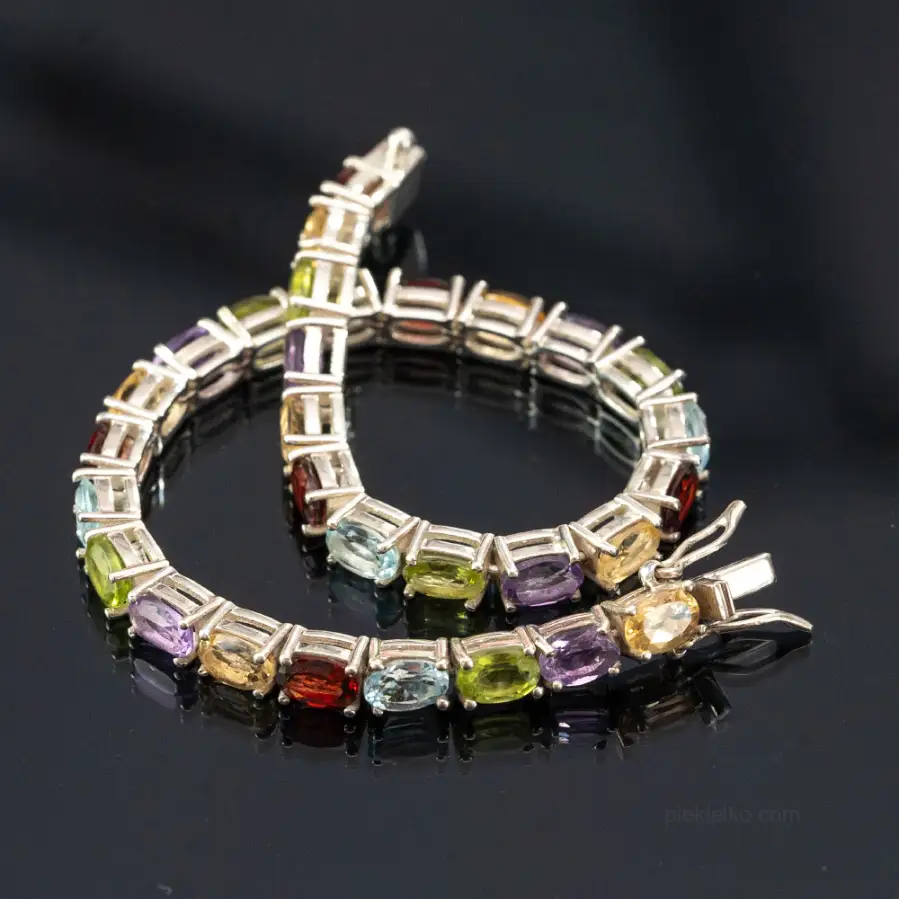
Indian silver bracelet with natural stones
590,00560,50 -
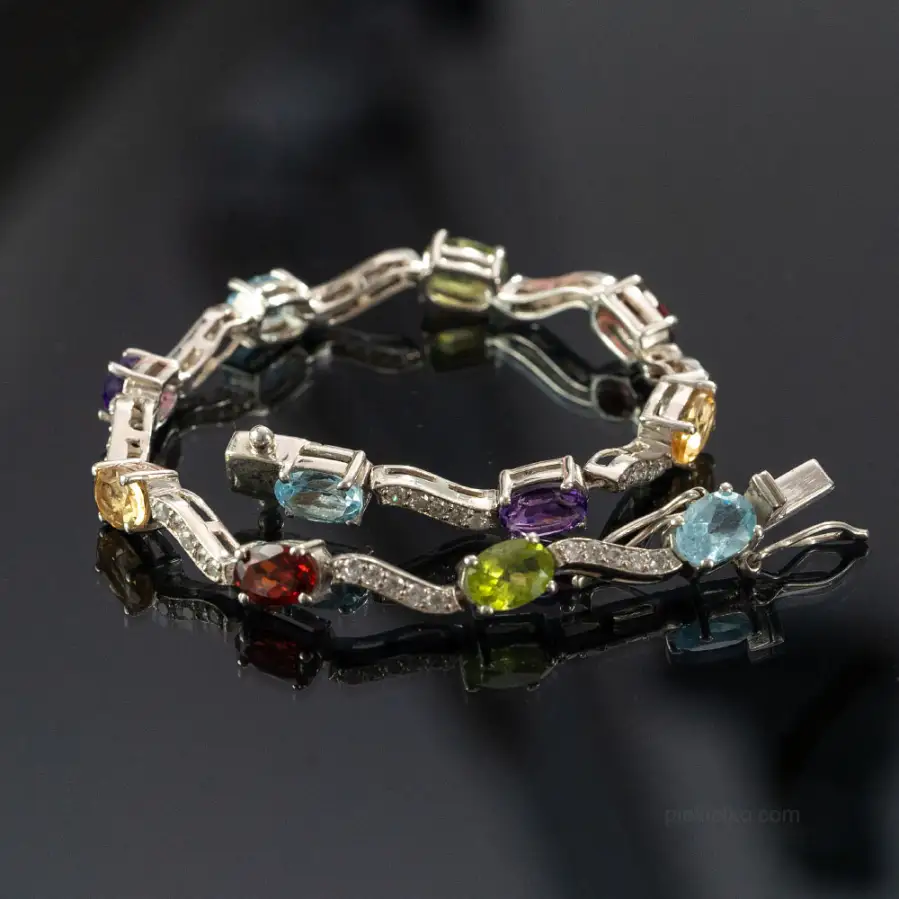
Oriental silver bracelet with colorful stones
620,00589,00 -
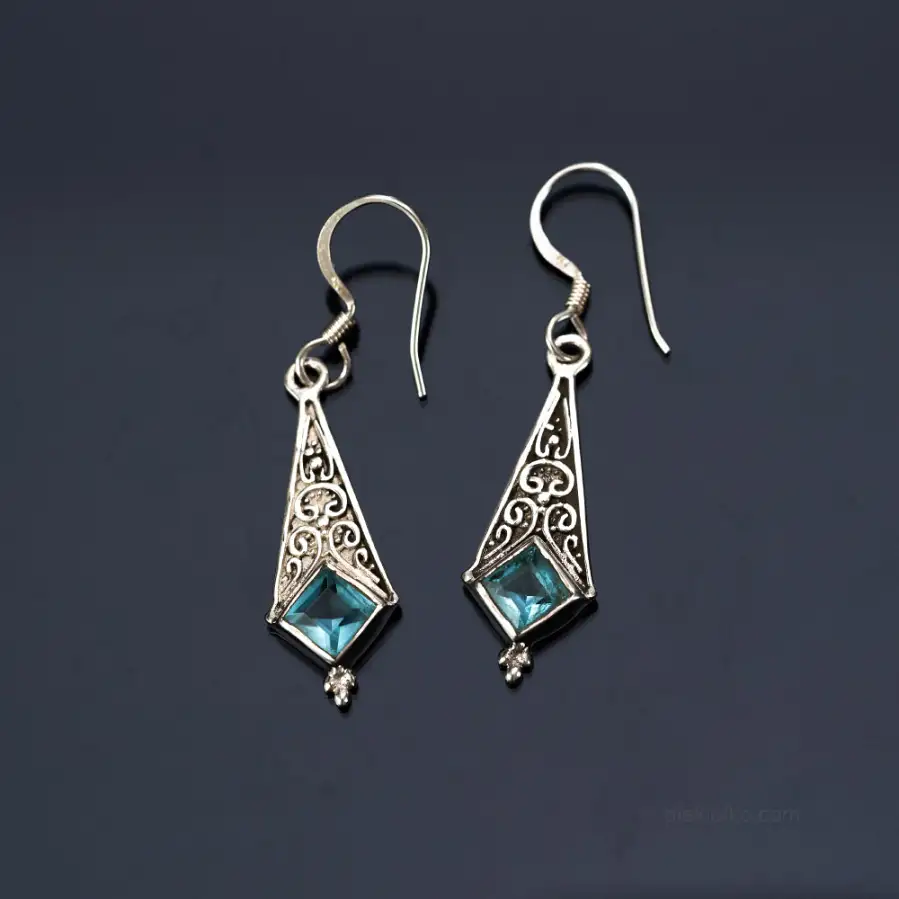
Deltoid-shaped earrings with blue topaz
130,00117,33 -
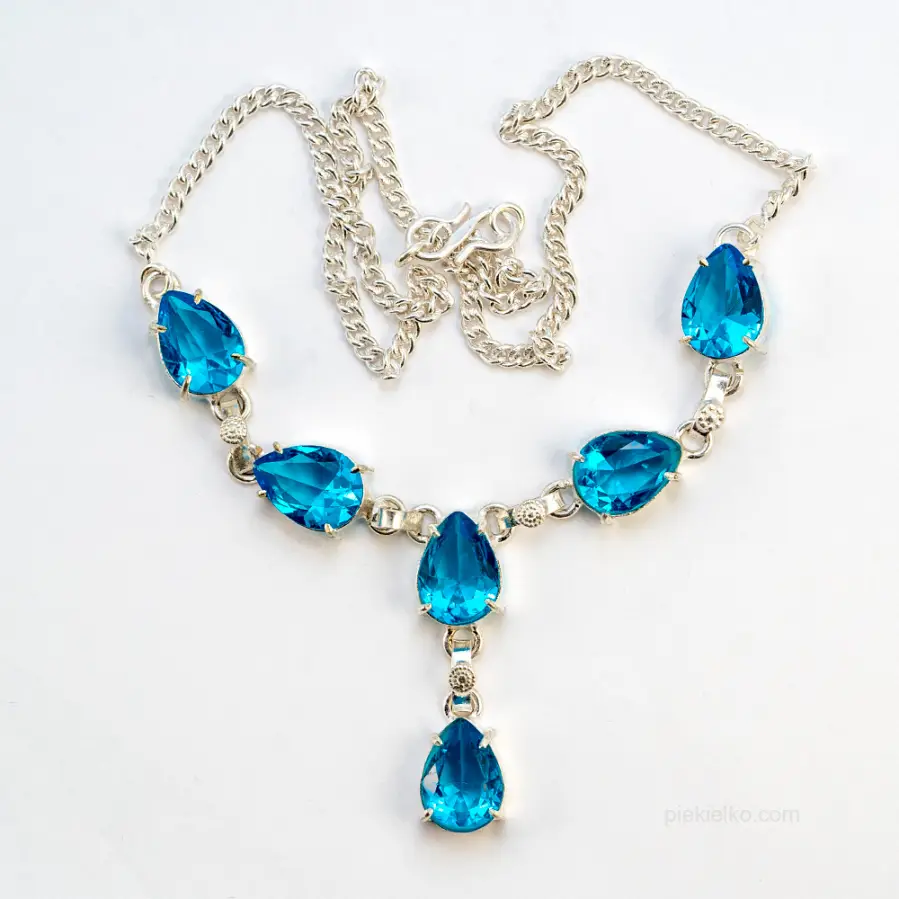
Necklace with blue topaz
270,00 -
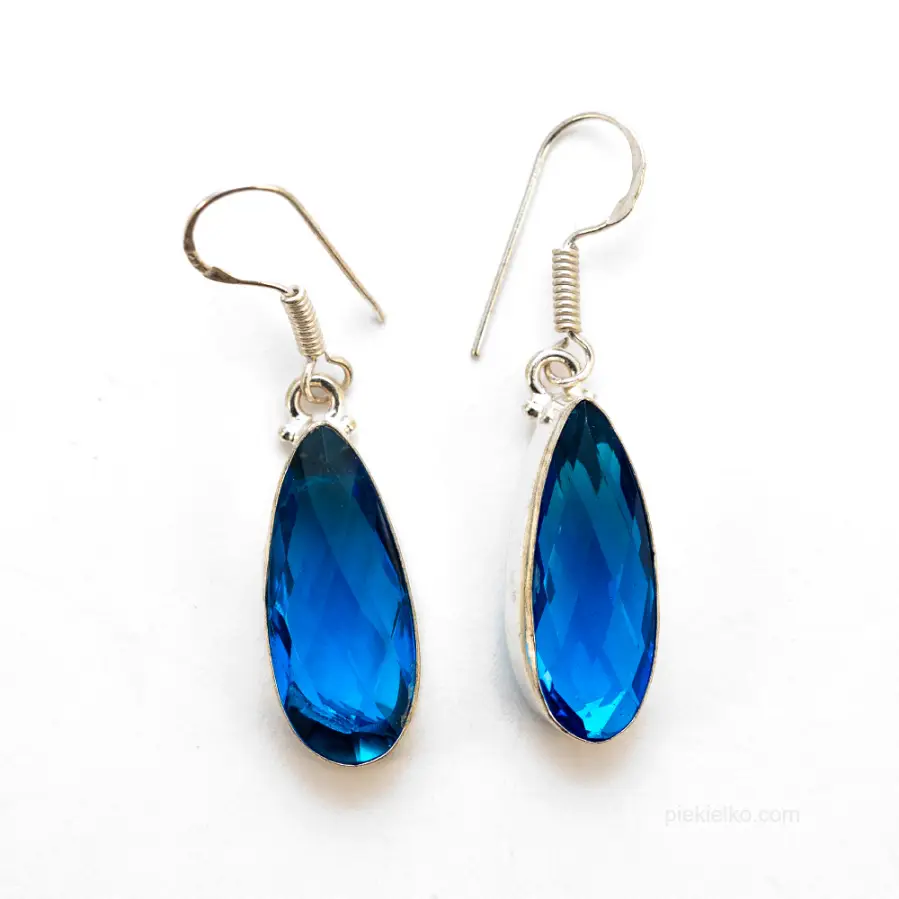
Blue topaz earrings
89,0050,73 -
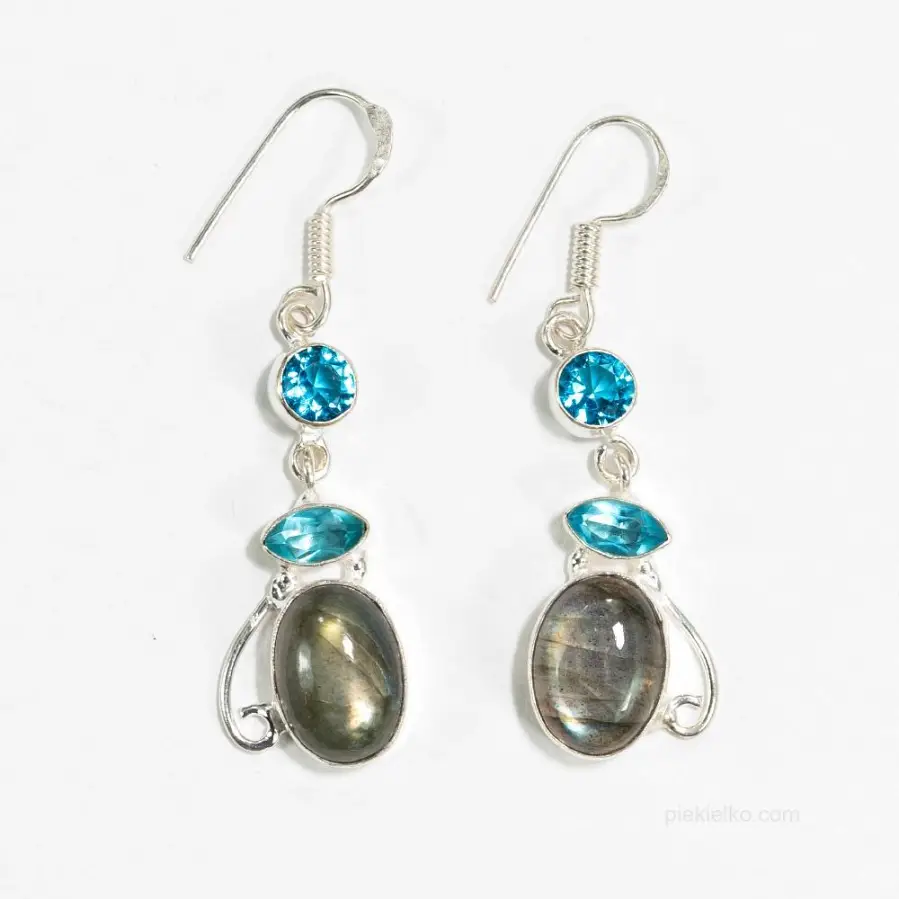
Blue labradorite topaz earrings
160,00152,00 -
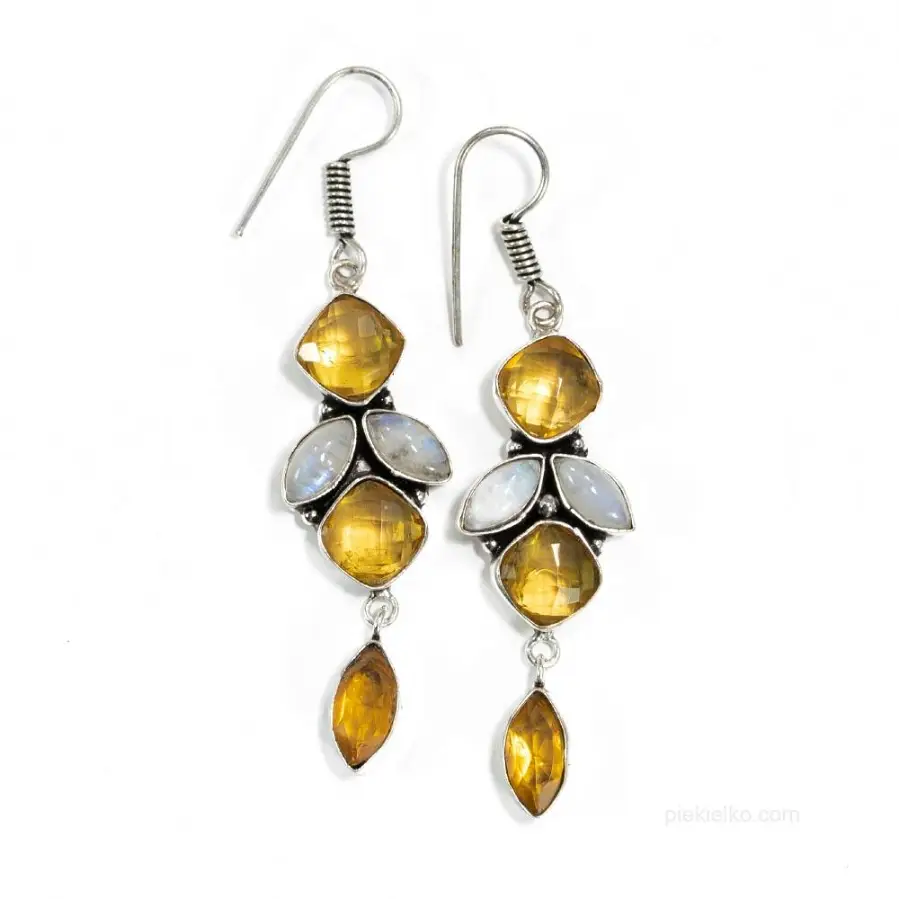
Silver earrings with topaz moonstone
160,00152,00 -
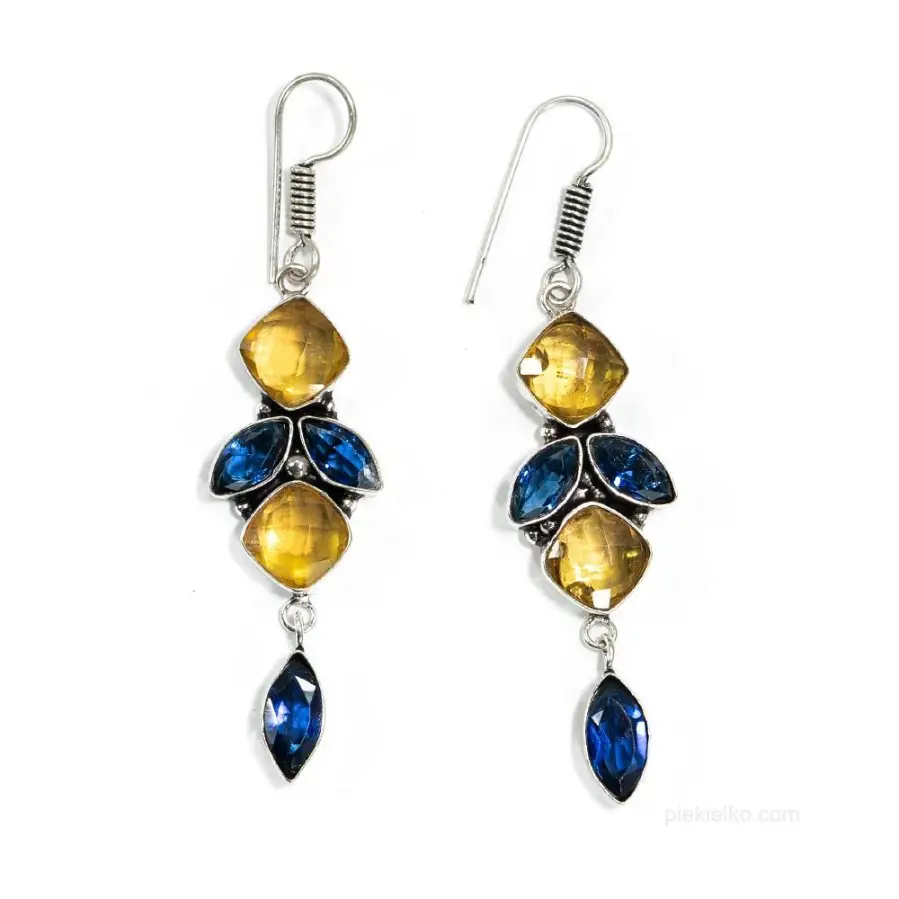
Silver topaz tanzanite earrings
160,00152,00 -
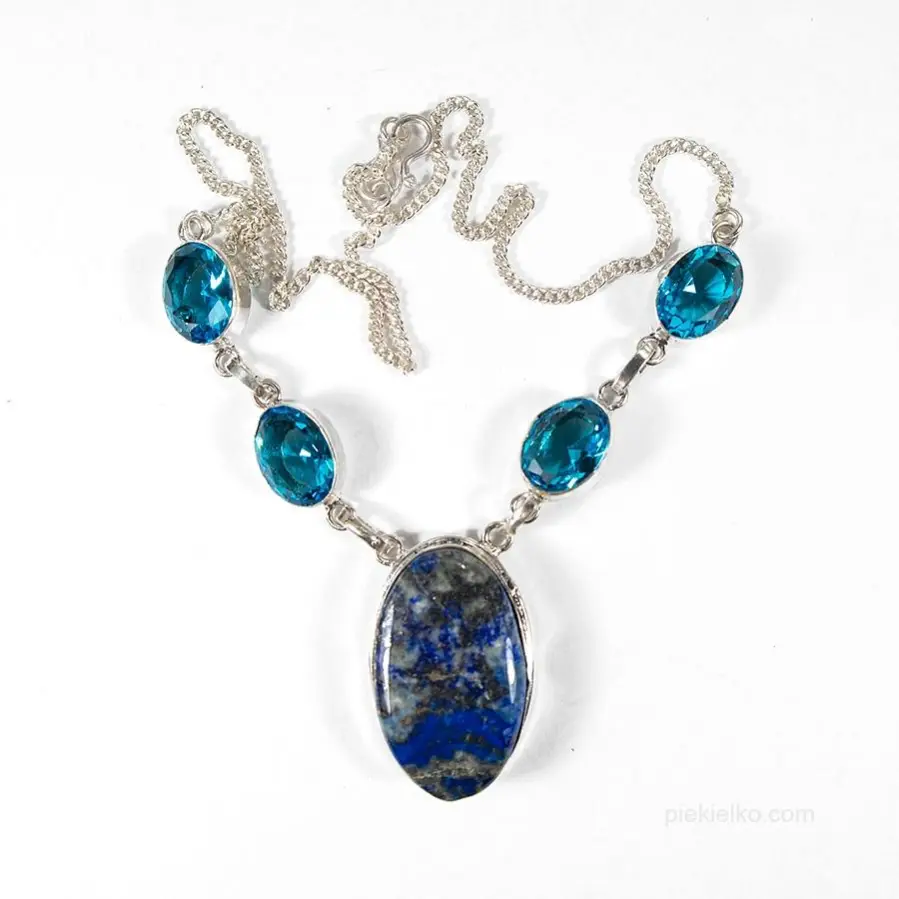
Necklace with topaz and lapis lazuli
198,00 -
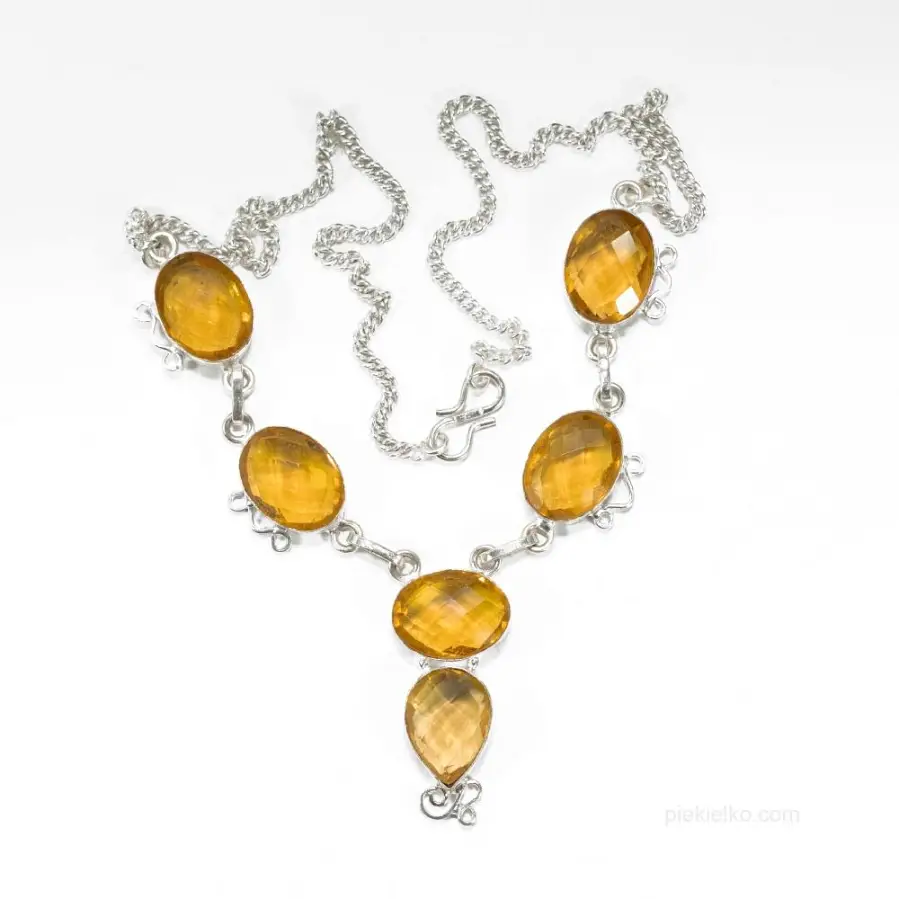
Necklace with lemon topaz
171,00 -
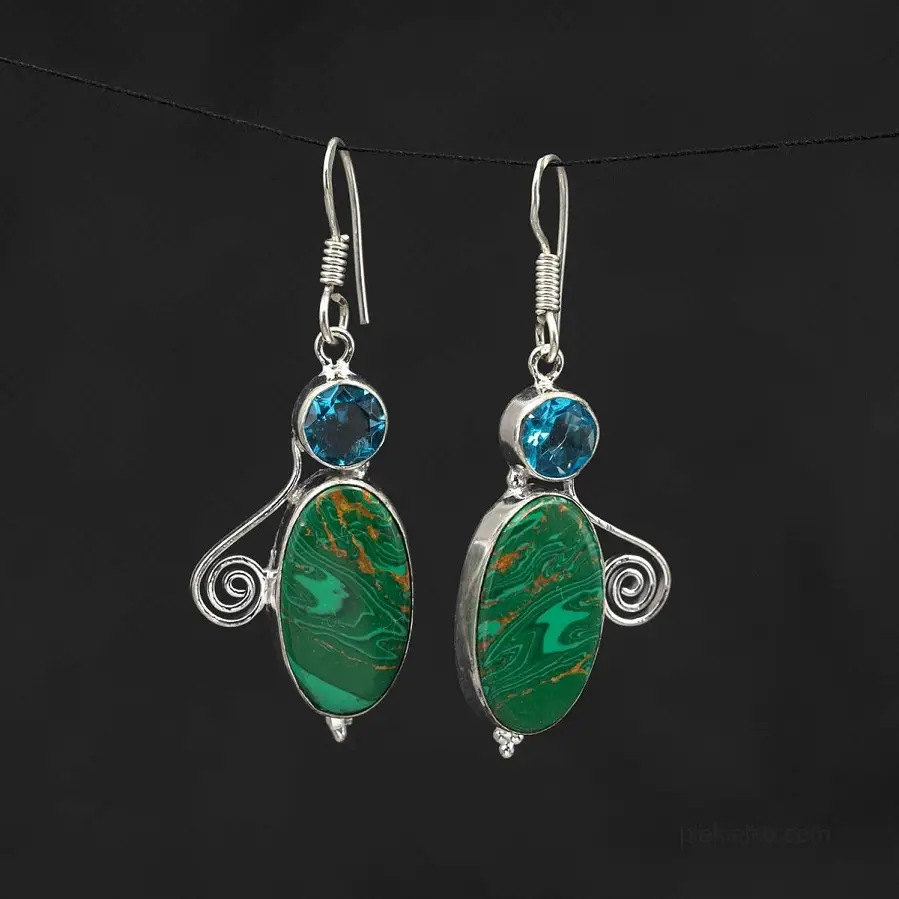
Silver rainbow calsilica topaz earrings
115,0065,55 -

Silver earrings with jasper and topaz
135,0076,95 -
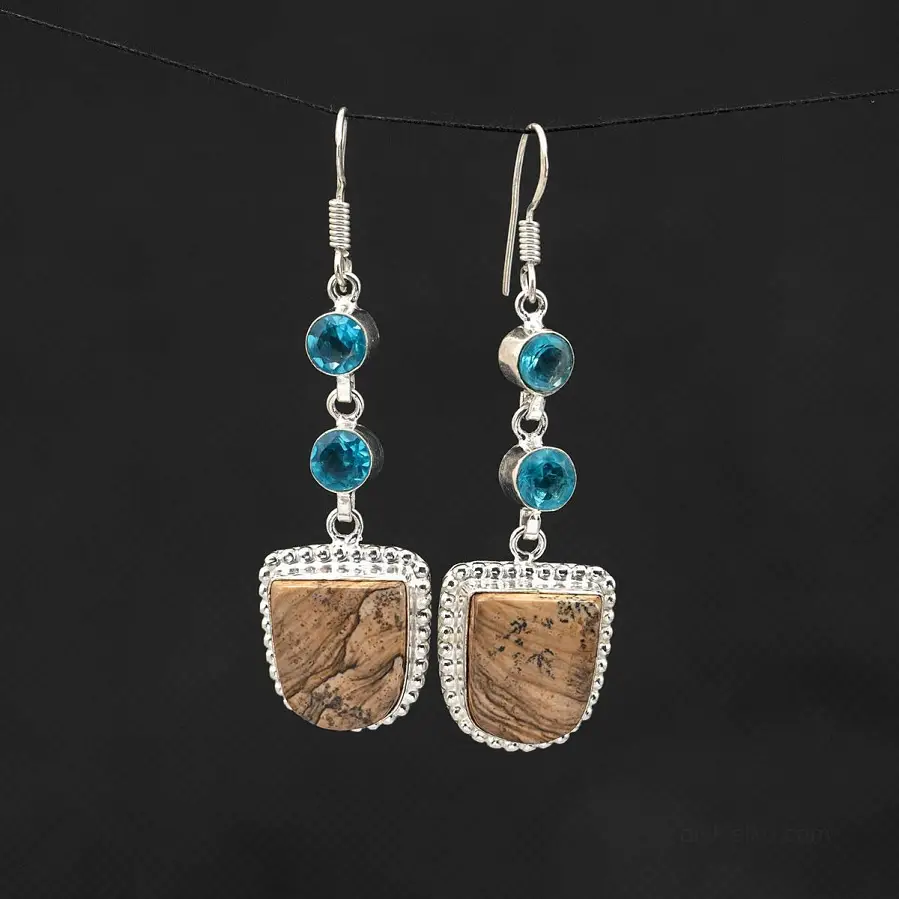
Earrings with jasper and blue topaz
125,0071,25 -
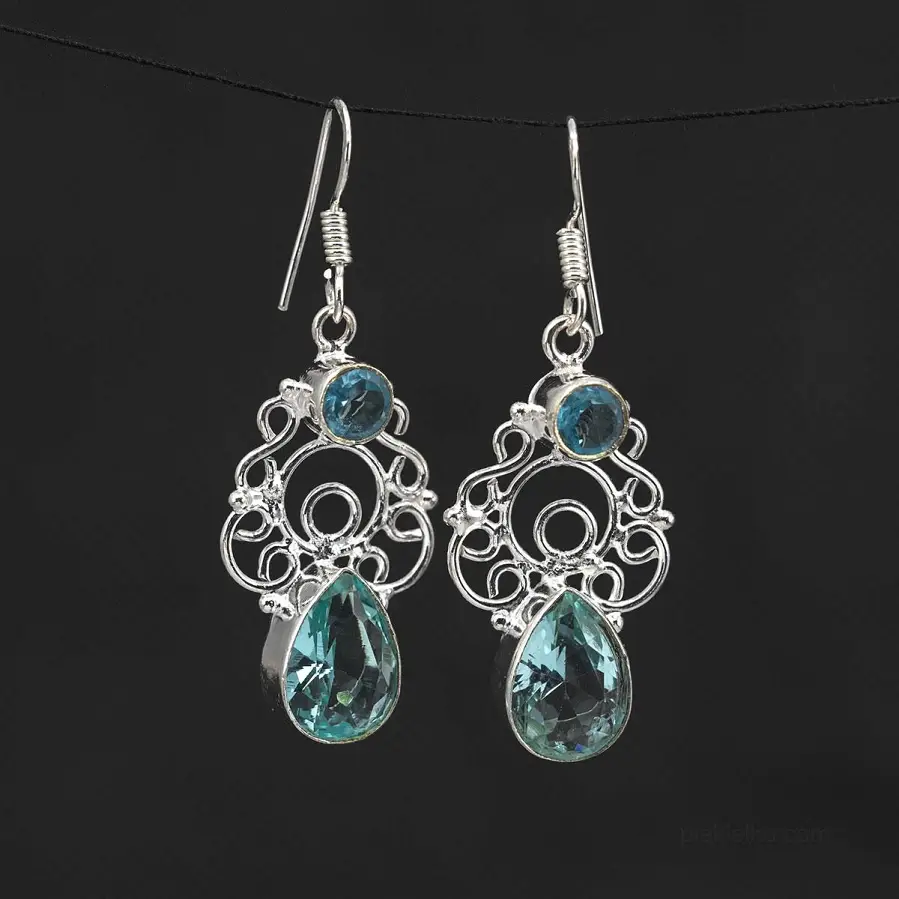
Silver-plated blue topaz earrings
145,0082,65 -

Blue topaz and green agate earrings
135,00128,25



© Piekielko.com

